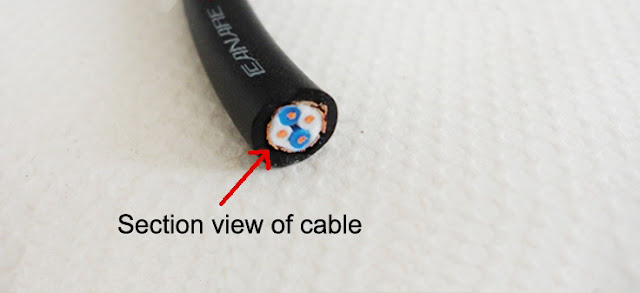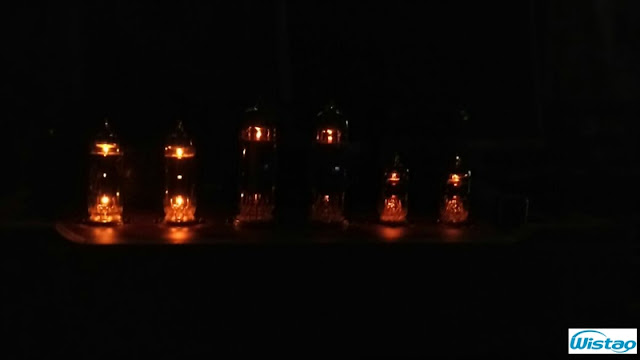What is HIFI RCA Cables?
RCA connectors are most commonly used on stereo equipment. In Power Amplifier systems they’re often used to connect a stereo CD player or other consumer electronics devices to the preamplifier board. They’re also used with the aux and tape inputs and outputs. “RCA” is derived from the Radio Corporation of America, the company that introduced the design in the 1940s. RCA connectors are also sometimes referred to as “phono connectors” since they’re used to connect turntables.
At the market, there are a lot of RCA cables like as RCA to RCA, 3.5mm phone jack to 2-RCA cable, and so on. The common RCA cable made of plastic overmolding rather than pure copper RCA connectors. They usually consist of a pair of wires molded together with separate ends color coded for left and right channel in stereo devices.
However, HIFI RCA cable is made of pure copper RCA connecters which are made of copper-plated plug generally, copper shell, and advantages of copper shell can be shielded from external interference and a pair separated OFC wires cable instead of a pair of wires molded together, and then assemble them though soldering with high quality solder. This kind cables offer excellent sound quality for audio and home theater applications, provide maximum sound performance compared to ordinary audio cables. OFC Copper wires provide optimized audio clarity. Pure copper conductor shielding offers protection against noise and interference. The color-coded connectors of the cable allow the users easy installation and identification. Gold-plated, heavy-duty connectors ensure long lasting, corrosion-free connections. RCA Audio/Video cables are used to connect the composite audio signal from the left and right channels on home theater equipment as well as the video signals.
The familiar HIFI RCA cables is two-tailed with one red and one white tail on each end, though some cables might substitute black for white. Many RCA cables have a third yellow tail to deliver a composite video signal. The cable connector is a male push-in, with a thick central pin surrounded by a thicken wall, rounded collar or crown. RCA cabling can also deliver component video signals.
The tails of an RCA cable are color-coded to correspond to the proper input or output jack on electronic equipment. Red tails or black tails connect to the right channel inputs/outputs, while white tails are used for left channels. In reality both wires are exactly the same, so switching colors makes no difference, but it is important that the same color be used for the same channel at each end of the cable. Since “red” and “right” both start with an “r,” it’s an easy way to remember how to connect the cables in a consistent manner, even on components without color-coding.
Much emphasis has been placed on the types of cables used to connect components and the ability to deliver signals without introducing interference. In some cases companies charge enormous amounts of money for cables that are supposed to deliver superior performance. Some of these cables have large, intricately designed molded heads and flashy packaging that necessarily figure into cost but not necessarily performance.
One generally accepted myth is that gold tips or connectors are always superior to silver. While gold does not conduct sound any better, it is non-corrosive and more malleable than silver, which could be an argument for buying gold-tipped plugs for applications where the plugs will be left in place. If the cables will be used in a patch bay where they will be plugged and unplugged often, silver tips might actually be a better choice than soft gold plating that can wear away.
A typical run of up to 10 feet (~3m) does not require an expensive audio RCA cable, though the cheapest possible cable — the type included with many electronic components as a freebie — might not be the best choice. Even still, the average person probably wouldn’t notice a difference between this RCA cable and another. Speaker wire gauge and type has a greater ability to make a discernible difference in audio, all else being equal, than the RCA cable. Choosing a modestly priced cable should do the trick.
 |
| HIFI RCA Cables |
 |
| HIFI RCA Cables |
 |
| Budweiser RCA connectors |
 |
| Budweiser RCA connectors |
 |
| copper-plated plug, copper shell |
 |
| Canare professional broadcast audio cable |
 |
| Canare professional broadcast audio cable |
 |
| Section of Canare professional broadcast audio cable |
There is HIFI RCA cable with Canare professional broadcast audio cable and Budweiser RCA connectors as features below.
1. Used Budweiser RCA connectors by U.S, which is made of copper-plated plug, copper shell, and advantages of copper shell can be shielded from external interference.
2. Used Japanese origin Canare professional broadcast audio cable, and commercial grade products don’t achieve its performance, more than 94% of the copper network density to ensure effective shielding of electromagnetic noise. 40 each of the wires from the particular fine 0.08mm copper wire twisted together, particularly good durability. This is Canare send technical application structure model of work, it is a good choice for a lot of HIFI audiophiles to change the cables, its analytical abundantly clear, very good reputation, reliability and durability than ordinary wire several times stronger than the above, cheap affordable, high cost.
3. Used genuine Akihabara 99.99% high purity oxygen-free copper audio signal lines, each line adds four core nerves, its main role restore audio fidelity sound field, so the lossless transmission of audio signals have sufficient safeguards . General transmission line signals of different frequencies have different impedances, this feature on the sound reduction performance of sound vague, production people do this out of the high-end speaker cables called intelligent signal line characteristics of this line the signal level of the frequency is divided into two channels, 5KHZ more signals transmitted by a special material nerves, 5KHZ outer following signals through the transmission line, which greatly improves the frequency characteristics of the transmission line, the reproduction of clear and transparent sound.
4. Use containing 3% silver Senju solders soldering.
5. External plus a network of high-density shock as protection.
6. It is made by manual.



















